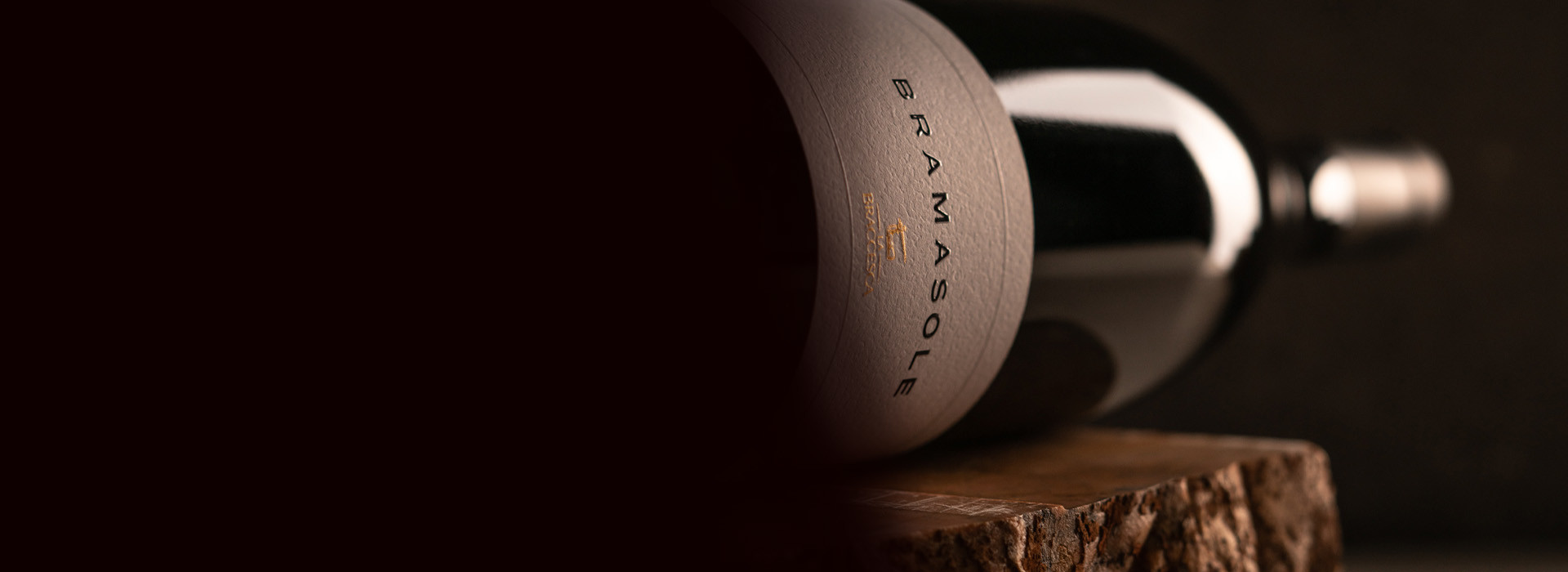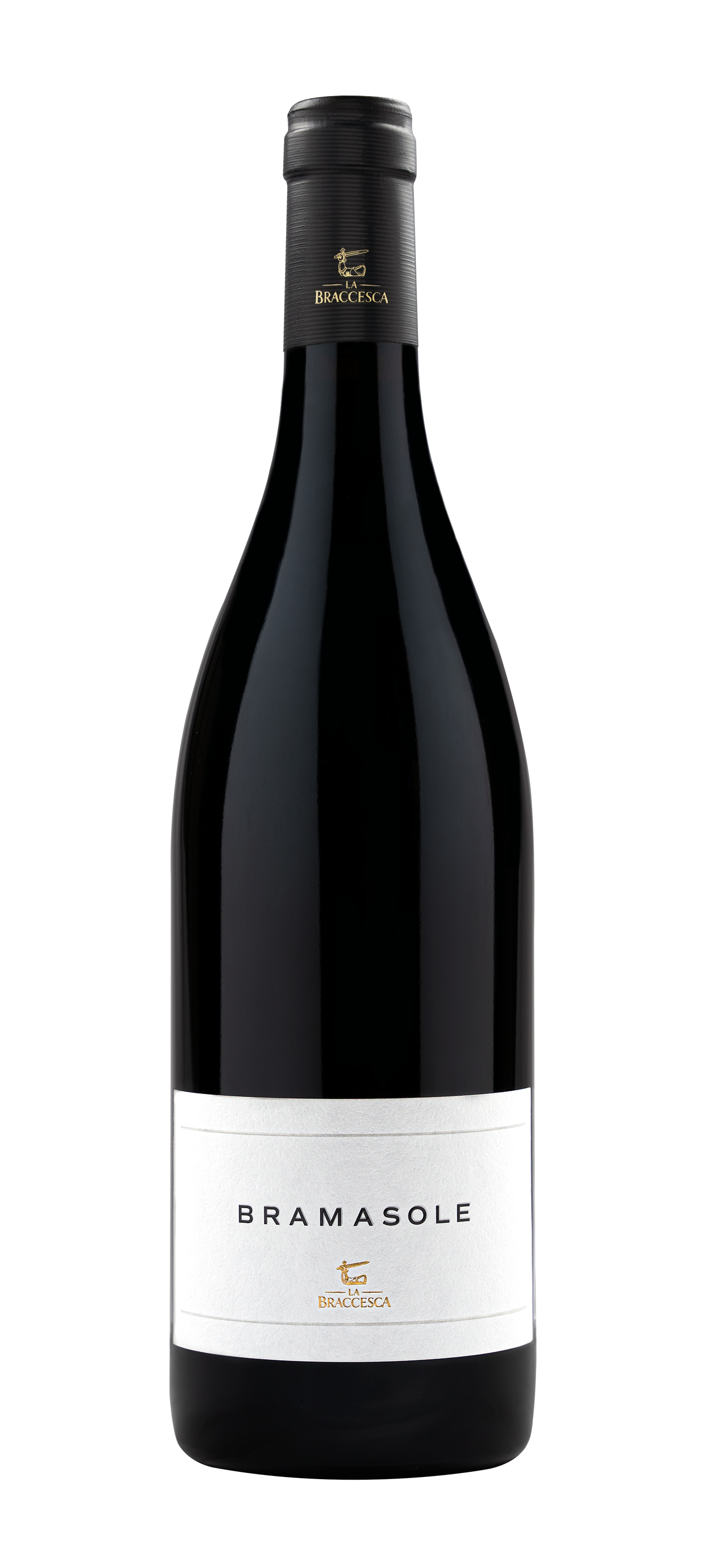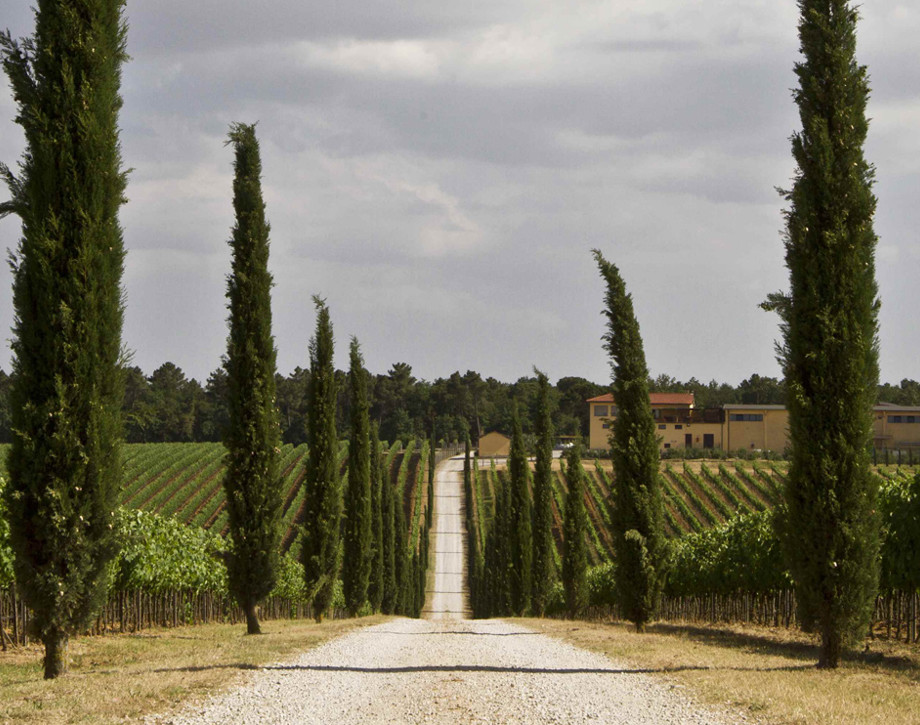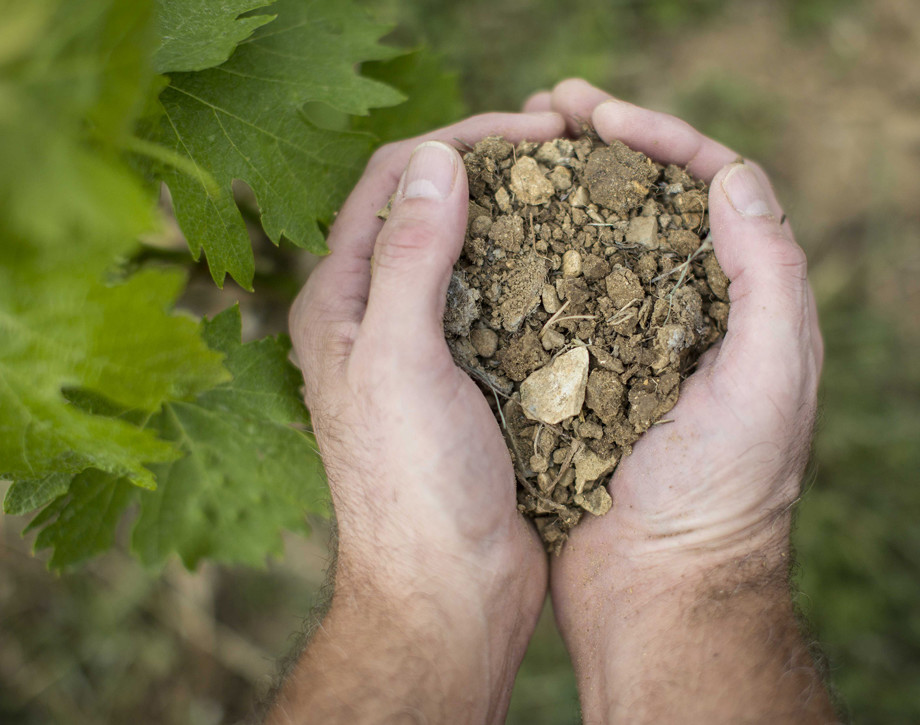Bramasole

Climate
Minimum temperatures were quite severe during the winter, whereas mild and balanced temperatures during the spring resulted in good new growth. As in the previous three years, phenolic growth started a little late. Fruit set and flowering took place as normal, due to the regular, warm temperatures. July and August temperatures were high, but not extreme, allowing the grapes to ripen slowly and normally, even if the vines were a little late arriving at full ripeness for the harvest. Water resources were good, as in 2005, allowing the vines to cope with the summer without any particular stress. The grapes achieved healthy ripeness and the August rains caused no damage.
Vinification
Around the middle of the month of September the Syrah grapes of the Braccesca vineyards had achieved an optimal state of maturation. It was therefore possible to follow through punctually with necessary procedures in the vineyard, such as the thinning out of the excessive bunches in order to obtain a more uniform maturation of those grapes which remained on the vine. The grapes thus obtained were then gathered and crushed. This was followed by approximately 20 days of alcoholic fermentation in steel tanks. The temperatures during this process never exceeded 30° C in order to preserve the fruity and floral aromas typical of this varietal. The resulting wine was then put into French new wood barrels (Alliers and Tronçais), with a small portion being transferred into American oak barrels, where malolactic fermentation took place. After 18 months of ageing, the wine was bottled in June of 2008, where it was able to continue ageing and refining until its release to the consumer market.
Historical Data
The estate’s name comes from the historical farm that once stood there, owned by the Count of Bracci, whose coat of arms appears on the estate’s logo; an arm covered with armor brandishing a sword. The property extends over an area of 508 hectares (1255 acres) and the vineyards cover an area of 340 hectares (840 acres) divided into two blocks: the first is 366 hectares (904 acres) of which 237 (585 acres) are planted with vineyards and is located on the border between the cities of Montepulciano and Cortona. The other block is 142 hectares (350 acres) of which 103 (254 acres) are planted with vineyards, it extends all the way to Montepulciano encompassing three of the most famous parcels of land known for the production of great red wines: Cervognano, Santa Pia and Gracciano. Bramasole is made from the sunniest part of the vineyard in one of Cortona’s best areas for the production of premium quality Syrah. Bramasole is a wine able to evolve over time and reflect this territory and its long-standing winemaking traditions using a new untraditional variety. Bramasole’s first vintage was 2000.
Tasting Notes
The wine has a beautiful deep red color with violet undertones, which are typical of this varietal. The fragrance is intense, with subtle hints of vanilla blended with notes of mature fruit. It is a well-balanced and elegant wine, with flavors of red fruit and white plum. The finish is soft and lingering on the palate.
Awards
Wine Advocate 92/100 USA Wine Spectator 93/100 USA

The Wine
Bramasole is made from the sunniest part of the vineyard, from the Antinori family’s innovative spirit and from one of Cortona’s best areas for producing premium quality Syrah. Bramasole is a wine able to evolve over time and reflect this territory and its long-standing winemaking traditions using a new untraditional variety. The first vintage to be produced was the 2000 vintage.

Climate
Minimum temperatures were quite severe during the winter, whereas mild and balanced temperatures during the spring resulted in good new growth. As in the previous three years, phenolic growth started a little late. Fruit set and flowering took place as normal, due to the regular, warm temperatures. July and August temperatures were high, but not extreme, allowing the grapes to ripen slowly and normally, even if the vines were a little late arriving at full ripeness for the harvest. Water resources were good, as in 2005, allowing the vines to cope with the summer without any particular stress. The grapes achieved healthy ripeness and the August rains caused no damage.
Vinification
Around the middle of the month of September the Syrah grapes of the Braccesca vineyards had achieved an optimal state of maturation. It was therefore possible to follow through punctually with necessary procedures in the vineyard, such as the thinning out of the excessive bunches in order to obtain a more uniform maturation of those grapes which remained on the vine. The grapes thus obtained were then gathered and crushed. This was followed by approximately 20 days of alcoholic fermentation in steel tanks. The temperatures during this process never exceeded 30° C in order to preserve the fruity and floral aromas typical of this varietal. The resulting wine was then put into French new wood barrels (Alliers and Tronçais), with a small portion being transferred into American oak barrels, where malolactic fermentation took place. After 18 months of ageing, the wine was bottled in June of 2008, where it was able to continue ageing and refining until its release to the consumer market.
Historical Data
The estate’s name comes from the historical farm that once stood there, owned by the Count of Bracci, whose coat of arms appears on the estate’s logo; an arm covered with armor brandishing a sword. The property extends over an area of 508 hectares (1255 acres) and the vineyards cover an area of 340 hectares (840 acres) divided into two blocks: the first is 366 hectares (904 acres) of which 237 (585 acres) are planted with vineyards and is located on the border between the cities of Montepulciano and Cortona. The other block is 142 hectares (350 acres) of which 103 (254 acres) are planted with vineyards, it extends all the way to Montepulciano encompassing three of the most famous parcels of land known for the production of great red wines: Cervognano, Santa Pia and Gracciano. Bramasole is made from the sunniest part of the vineyard in one of Cortona’s best areas for the production of premium quality Syrah. Bramasole is a wine able to evolve over time and reflect this territory and its long-standing winemaking traditions using a new untraditional variety. Bramasole’s first vintage was 2000.
Tasting Notes
The wine has a beautiful deep red color with violet undertones, which are typical of this varietal. The fragrance is intense, with subtle hints of vanilla blended with notes of mature fruit. It is a well-balanced and elegant wine, with flavors of red fruit and white plum. The finish is soft and lingering on the palate.
Awards
Wine Advocate 92/100 USA Wine Spectator 93/100 USA

Tenuta La Braccesca
La Braccesca spreads over 508 hectares where the ancient farm of the Bracci counts once stood, hence the name of the estate and its coat of arms: an arm covered in armour holding a sword. Since 1990 the Marchesi Antinori have owned the estate. The total surface area of the vineyards is 334 hectares divided into two parts: the first, of 232 hectares is located on the border between the municipalities of Montepulciano and Cortona. The other body, 102 hectares of which are planted with vines, extends as far as Montepulciano between three of the most renowned sub-zones for the production of great red wines: Cervognano, Santa Pia and Gracciano.

Soil
Clay loam


















